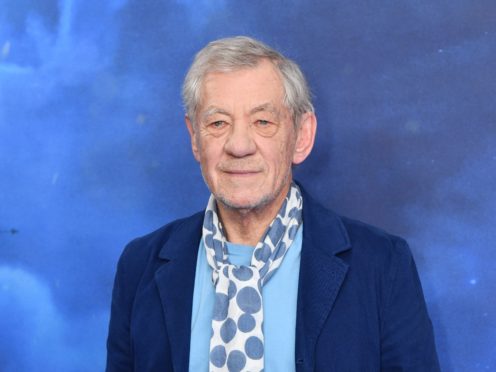Sir Ian McKellen has said it is clear to him that Hamlet is bisexual, ahead of his return to the role in an age-blind interpretation.
The theatre veteran, 82, first played the Prince of Denmark in the Shakespeare tragedy 50 years ago and will take on the part once again in a production opening at the Theatre Royal Windsor next week.
It is thought Hamlet was meant to be around 30.
A brief preview of HAMLET, which begins 21 June at Theatre Royal Windsor https://t.co/cAaDiawdF4 pic.twitter.com/zXPcHLMFhX
— Ian McKellen (@IanMcKellen) June 11, 2021
He told BBC Radio 4’s Front Row: “When you come see me you won’t see an old man pretending to be an young man, you’ll see a man pretending to be a prince, pretending to be an intellectual, pretending to be a neurotic, pretending to love his mother, pretending to love girls and boys.
“You didn’t know that was in Hamlet did you?
“It’s there, Rosencrantz to Hamlet: ‘You did love me once’.”
Discussing returning to the role in his 80s, Sir Ian said: “I suppose I thought I might be playing Polonius, ‘No we’d like you to play Hamlet’, said Sean (Mathias, theatre director).
“There was a pause, I thought that sounds like a bit of a silly idea, and then I thought no if that’s what you want to do, if you want to just say at the beginning of the show; ‘Here is a group of actors – all sizes, shapes and ages, and colours and ethnicities, and experience – and we’re going to tell the old familiar story, but perhaps not in the old familiar way’, that seemed to me an adventure worth going on.”
In just two weeks we'll be on stage for the first performance of HAMLET. Many shows are sold out. Thank you! Good seats remain for some shows and I look forward to seeing you there. https://t.co/cAaDiawdF4 pic.twitter.com/UL5ZJN9M3U
— Ian McKellen (@IanMcKellen) June 6, 2021
Sir Ian came out during a BBC radio appearance in 1988 and said he could not recall if it was planned or a spontaneous decision.
He said: “I can’t tell you for certain, but I know I’d been thinking about it and discussing with friends who were open about their sexuality as to whether it would be an appropriate thing for me to do.
“People I talked to, principally Armistead Maupin, author of Tales Of The City, he said it would be important for me in my development as a person, but he said it would be important for other people.
“Well, that rather appealed to me, coming from a family of ‘do-gooders’.
“I hadn’t felt up to that time that I was disadvantaged by the laws of the land which made it illegal for me to make love, because I simply broke the law.
“But of course when I grew up and understood what the actual laws were – and this pernicious new little law (Section 28) that was being brought in, very mean spirited, inhibiting children to being introduced to the fact of homosexuality in society – it was only when I realised that there was grave injustice, that I realised it was a grave injustice against me and I took it personally, and once I’d taken it personally it became obvious not what I had to do, but wanted to do.”
Asked if it liberated him, he replied: “Totally, oh yes.
“Once you are free as everyone else is, to choose to be your own person and express yourself in your own way – which when you’re in the closet you can’t and don’t do – your life of course changes in every aspect for the better, particularly in relationships with other people.
“Is it any wonder that my acting got better?
“It did, almost overnight.
“Now my acting is not about disguise but about revelation.”
The full interview is on Front Row on June 18 from 7pm on Radio 4 and BBC Sounds.
